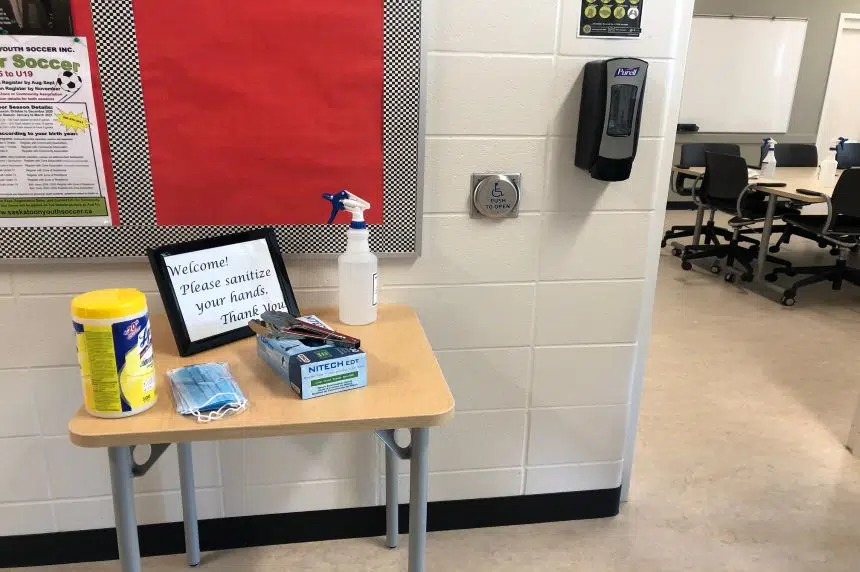The number continues to change day by day, but many Saskatoon students are at home due to positive COVID-19 cases within classrooms and cohorts.
As of Monday, 53 classrooms and cohorts within Saskatoon Public Schools are at home, self-isolating.
As of Friday, the Greater Saskatoon Catholic School Division had 26 groups in self-isolation.
Altogether, since the beginning of the pandemic, 93 classes or cohorts have had to self-isolate within Saskatoon Public Schools. Greater Saskatoon Catholic Schools did not have that information available to 650 CKOM.
Those statistics were relayed Monday to Saskatchewan Teachers’ Federation president Patrick Maze, who had an idea as to what’s next – or what should be next – for schools across the province.

Saskatchewan Teachers’ Federation president Patrick Maze. (Brady Lang/650 CKOM)
“That’s thousands of students that are affected, just (in) Saskatoon. I think it’s a point where we just turn this over to medical health professionals,” Maze said. “Ultimately, it’s medical health professionals who should be responsible for coming up with a plan and they should be trusted, and that’s who we should be listening to moving forward.”
Maze said he hasn’t heard of a provincewide move to a separate phase in the provincial government’s Safe Schools Plan.
He said it’s down to each school division left with its own response to COVID-19.
“It’s time we listen to the experts,” he explained. “This is a full-blown crisis. It’s time to turn all of this over to medical health professionals. (It’s time to) basically stop debating what should be done by anyone who isn’t a medical health professional.”
Maze said the COVID response hasn’t been dependent on where the schools lie geographically – it’s based on specific cases, or outbreaks, that have happened within those specific areas.
He mentioned “hotspots” such as Indian Head in the Prairie Valley School Division and Martensville in the Prairie Spirit School Division, explaining their outlooks on the pandemic as a whole are greatly different than other communities that haven’t had to deal with the virus.
“An outbreak can occur at any time in any community,” he said.
If the province is planning a possible “circuit-breaker” or extending the holiday break for students, Maze isn’t aware of those discussions.
“If the government has a plan, it would be nice if they’d let us know … We expect both school divisions and the government to keep teachers and school employees safe and students right across the province,” he said.
“I’ve heard lots of talk about the benefits of a potential type of ‘circuit-breaker’ type of activity or a situation. But ultimately, I haven’t heard anything in any of the discussions I’ve had of government being interested in moving to that. In fact, (it’s) probably the opposite from what I hear as far as wanting to keep the economy running.”
He said as classrooms are shut down, parents will have to stay at home with their children in many situations. That, ultimately, creates a smaller, localized economic shutdown in itself, just by closing down classrooms.
Maze said the classroom shutdowns are also affecting the students’ ability to learn. It’s also having an effect on the anxiety that educators are tasked to deal with on a daily basis.
“It looks like things are going to get worse before they get any better. We’ve got lots of concerns,” he said.
Another issue caused by COVID is the effect it’s having on substitute educators, Maze said. He said he has even heard of teachers being pulled off planning periods to cover classrooms that are not their own – creating an even bigger problem in the school setting.
“In some situations, (that’s done) even at the expense of crossing cohorts, so when you start worrying about failure to protect cohorts, then you know the situation is quite dire,” he said.
The Saskatchewan Teachers’ Federation represents more than 13,500 teachers employed in PreK12 schools who serve Saskatchewan’s 27 school divisions across the province.







